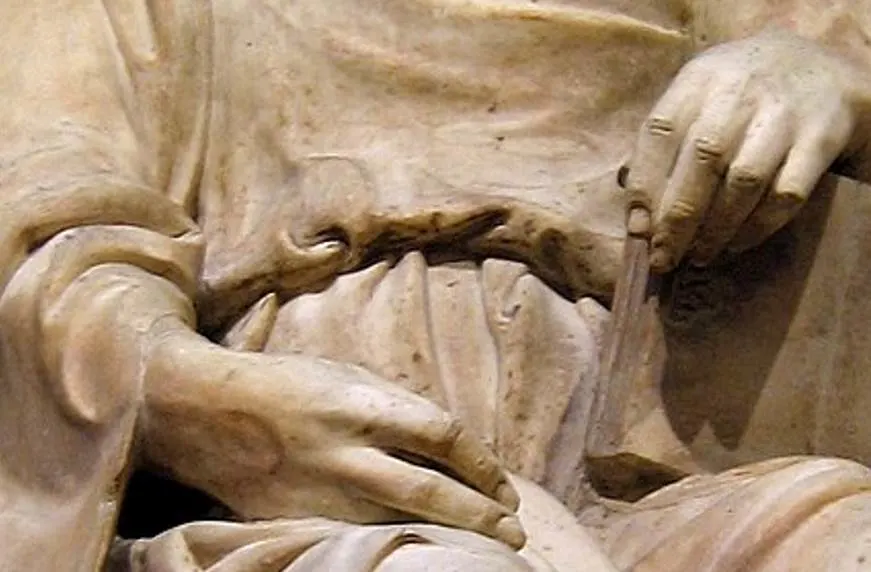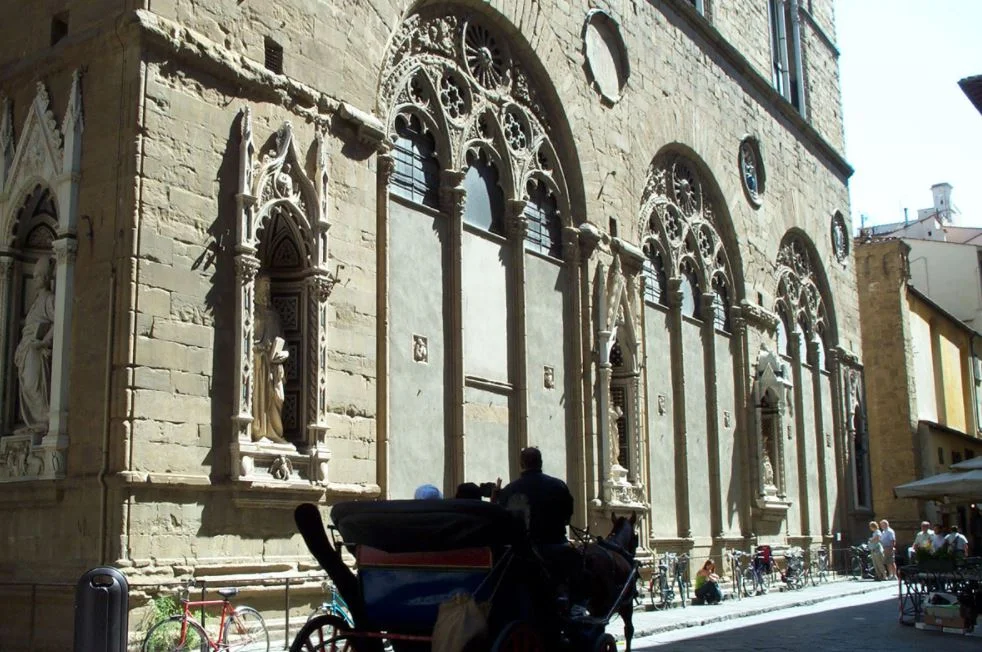A young sculptor from Florence named Donato di Niccolò di Betto Bardi (1386-1466) visited Rome in the early 15th century to study classical sculpture.
The things he learned would revolutionize the world of art in his home city which he decorated with multiple remarkable sculptures in the following decades.
In this article, we’ll take a closer look at some of the most interesting facts about St John the Evangelist by Donatello, one of the most fascinating works in the Italian artist’s oeuvre.
1. It was sculpted when Donatello was in his early 20s
Donatello is considered to be one of the greatest Renaissance artists of his time. He owed a lot to a meeting with the leading architect of the time, Filippo Brunelleschi (1377-1446), a man credited with being the founding father of Renaissance architecture.
Both young men visited Rome in the early 15th century, probably around 1403. It’s here that they studied classical architecture and somehow managed to integrate the ideals of ancient architecture and sculptures into their works.
The first commissions for Donatello were a collaboration with Lorenzo Ghiberti (1378-1455) to decorate the Florence Baptistery in 1406. He completed the statue of St John the Evangelist just a few years later between 1409 and 1411.

2. It was commissioned to decorate the façade of the old Florence Cathedral
Florence Cathedral is one of the most amazing churches in the world and its incredible dome is the ultimate masterpiece of Brunelleschi. It didn’t look the same way it did as to looks today in the early 15th century, though.
The dome of the cathedral as it looks today wasn’t completed until the year 1436 and the façade in its current form until 1887.
The original façade looked a lot simpler as it does today, mainly because only the lower part was finished. Its design is credited to both Arnolfo di Cambio (1240-1310) and Giotto di Bondone (1267-1337), both architects and sculptors active in Florence during the Late Middle Ages.

This façade features several niches which were decorated with various sculptures, including this masterpiece by Donatello.

3. It’s a defining sculpture in the history of art
It’s fair to assume that such a realistic depiction of the subject, in this case, St John the Evangelist, wasn’t what di Cambio and Giotto had in mind. That’s because it’s a move away from the heavily idealized late-Gothic sculptures of the 13th and 14th centuries.
In that sense, this sculpture by Donatello can be described as one of the pioneering artworks of the Renaissance. It still features some idealized elements such as the face and shoulders of St John, but already integrates elements of naturalism such as the man’s open hand on his book.
This type of realistic rendering of the subject eventually culminated in Donatello’s David, one of the artist’s ultimate masterpieces produced during the 1440s.

4. The body of St John is disproportionate for a particular reason
If you closely examine the sculpture of St John the Evangelist by Donatello then you’ll instantly notice that St John’s body is disproportionate. His legs are way too short in comparison to the length of his body.
The reason for this is that the sculpture was commissioned to decorate one of the niches of Florence Cathedral’s old façade, which means it was located in an elevated position.
Donatello integrated a sense of perspective so St John’s body appeared proportionate when looked upon from street level as it was intended.

5. Where is the sculpture located today?
Upon completion in 1411, the sculpture was placed inside the niche of the medieval façade of Florence Cathedral. It remained there until the outdated medieval façade (which was only the lower portion) was dismantled between 1587 and 1588.
The sculpture of St John the Evangelist was then moved to a building known today as the “Museo dell’Opera del Duomo.” This museum is located just next to the cathedral and can be accessed from the Piazza del Duomo.
The sculpture is in good company because the original doors of the Florence Baptistery, referred to by Michelangelo as “The Gates of Paradise,” are on display here. Michelangelo’s sculpture called “The Deposition” (1547-1555), among many other famous sculptures, is on display here as well.

More interesting facts about St John the Evangelist by Donatello
6. The sculpture was created over life-sized because it had to decorate a niche that was located several meters above street level. The seated statue of St John has a height of 210 centimeters (82.67 inches).
7. Donatello didn’t mess around with the size of the statue because he already had a bad experience with an earlier statue he sculpted. He was commissioned to complete his first version of David in 1408 to decorate one of the buttresses of Florence Cathedral.
This was a dual commission with Nanni di Banco (1385-1421) who sculpted a statue of Isaiah. Both works were completed in 1409 and at least one was lifted into position. None of these sculptures was eventually placed there as they were deemed too small to be visible from ground level.

8. The problem of sculptures decorating Florence Cathedral extended into the next century. Michelangelo completed his world-famous Statue of David between 1501 and 1504 and made it so big that it weighed a whopping 6 tonnes.
While the size of the statue wasn’t a problem to see it from street level, it was never lifted in place because this was simply impossible without modern machinery as it was way too heavy.
9. The statue of St John was received incredibly well by the public of Florence. This ensured that Donatello never had trouble earning commissions from the riches patrons in the city, including the powerful Medici family.
His next major project was the decorate the niches of another church in the city called “Orsanmichele.” For this church, he sculpted the statue of Saint Mark between 1411 and 1413 and the statue of Saint George between 1415 and 1417.

10. The Museo dell’Opera del Duomo is the ultimate place to go if you’re interested in sculpture as it houses an amazing collection. You can see the transition from Gothic to Renaissance sculpture as it happened in the late 14th and early 15th centuries.
One of the most amazing exhibits inside the museum is a replica of the medieval façade of the old Florence Cathedral, including the sculptures that once decorated it. This allows you to see exactly where the sculpture of St John the Evangelist by Donatello was placed.

